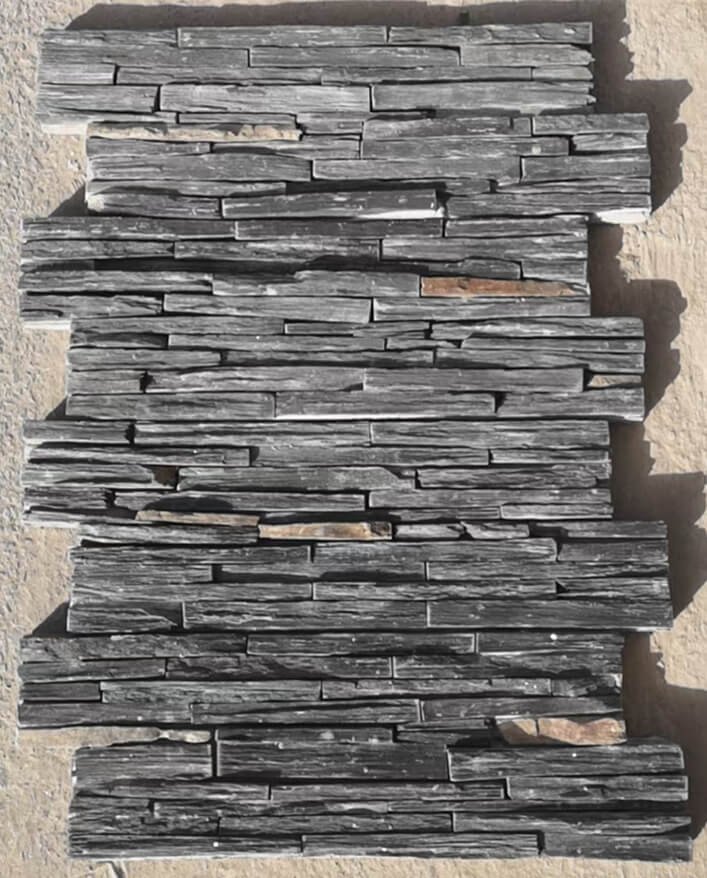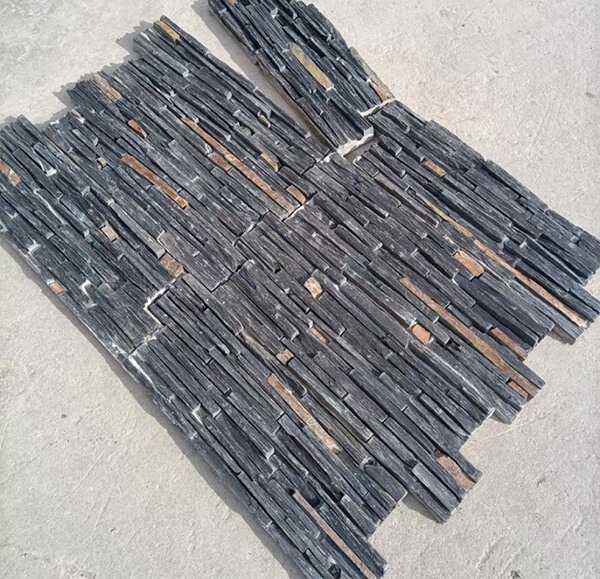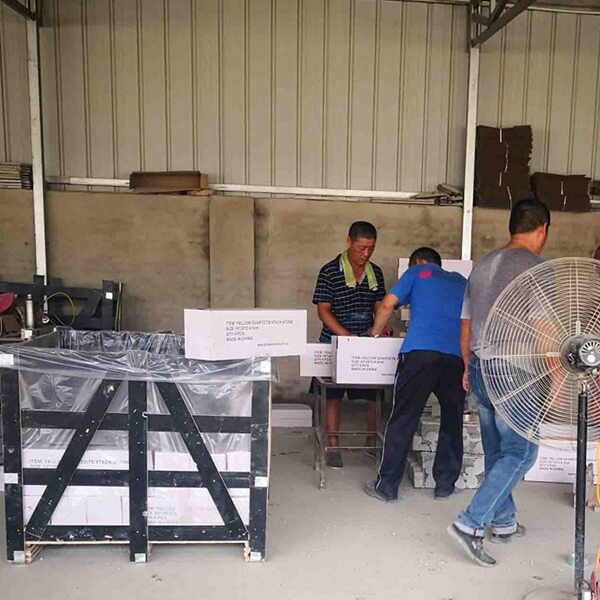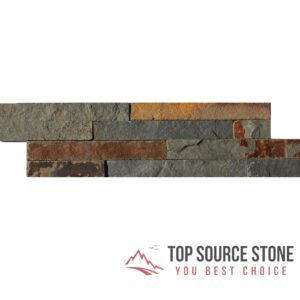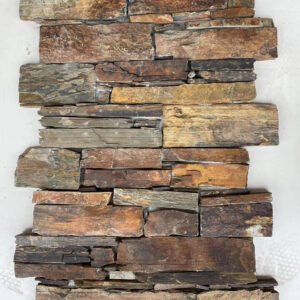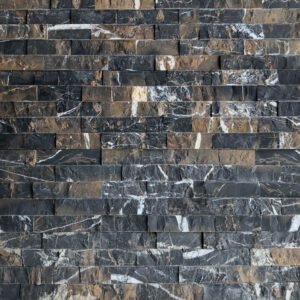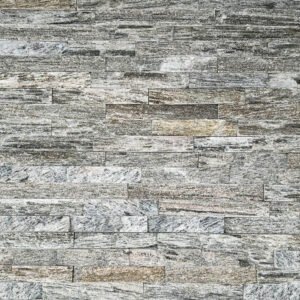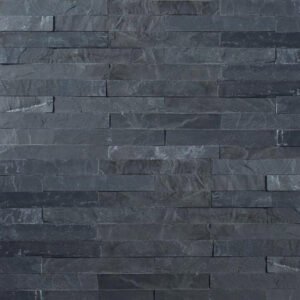Q: What is the exact thickness of Jet Dark panels?
A: Panels measure 3-4 cm (1.18-1.57 inches) total thickness. The stone surface layer sits on a 3 cm cement mortar base reinforced with fiberglass mesh. This pre-assembled design means you install a complete system, not loose components.
Q: Can Jet Dark panels be used on both interior and exterior walls?
A: Yes. Interior and exterior applications are fully supported. Exterior applications require C2-S1/S2mortar to withstand temperature cycling and moisture. Interior applications can use C2 or C2-S1/S2 mortar. The mechanical anchor system works identically for both applications.
Q: What surfaces can Jet Dark panels be installed on?
A: Panels install on concrete block, poured concrete, exterior framing with sheathing and weather-resistant barrier, and properly prepared masonry. Surfaces must be structurally sound and free of paint, sealant, and loose material. Sandblasting may be required for sealed or painted surfaces.
Q: Are special corner pieces and trim available?
A: Yes. We supply solid corners, straight-end corners, double-end corners, and window corner pieces. These specialized components allow you to finish all edges without field cutting. Edge treatments can be specified at order time.
Q: Does the color vary between panels or production batches?
A: Natural slate inherently contains color variation—this is the aesthetic advantage over manufactured alternatives. Dark tones predominate, with blue and grey undertones creating visual depth. We employ a color-matching process to ensure batch-to-batch consistency. Large projects benefit from advance review of representative panels.
Q: How long will Jet Dark panels last?
A: Natural slate is extremely durable. Properly installed Jet Dark panels perform for 50+ years with minimal maintenance. The fiberglass mesh reinforcement and mechanical anchoring prevent typical failure modes. European certifications validate this durability claim under rigorous testing.
Q: Will the color fade or change over time?
A: Natural black slate resists color fading exceptionally well. The dark and blue tones are inherent to the stone mineral composition, not surface treatments. Over decades, slight weathering may create subtle character changes, similar to natural patina. This typically enhances rather than diminishes aesthetic appeal.
Q: How does Jet Dark perform in freeze-thaw climates?
A: Jet Dark slate is specifically selected and tested for freeze-thaw resistance. Panels carry DIBT and CSTB certifications validating performance in cold climates with repeated freezing and thawing. The fiberglass mesh and mortar base resist freeze-thaw stress better than individual stone pieces alone.
Q: What maintenance is required after installation?
A: Jet Dark panels require minimal maintenance. After installation, light cleaning with water and soft brush removes adhesive residue after 36 hours. Long-term maintenance involves occasional cleaning with mild detergent and water to remove dirt and weathering. No sealers are required, though some projects specify sealing to enhance color depth. Test sealing on small areas before large applications.
Q: Can moisture get behind the panels and damage the substrate?
A: Proper installation prevents moisture accumulation. The weather-resistant barrier and correct trowel technique create tight adhesive coverage that sheds water outward. The mortar joints are weather-exposed, not sealed—this allows any trapped moisture to drain freely rather than creating dams. Proper substrate preparation and weather-resistant barriers are critical for exterior applications.
Q: What is the standard lead time for Jet Dark panel orders?
A: Standard stock items typically ship within 2-4 weeks. Custom pieces (corners, trim) may require additional lead time. Large projects benefit from advance ordering to ensure availability. Contact our sales team with your project timeline for specific lead time confirmation.
Q: Can I order partial pallets or custom quantities?
A: Yes. We supply any quantity needed for your project. A 570 square foot order ships as three full pallets (450 square feet) plus one partial pallet (120 square feet). No minimum order restrictions beyond economical shipping consideration.
Q: What is the weight of Jet Dark panels for shipping and handling?
A: Standard pallets weigh approximately 2,200 pounds (1,000 kg) for 150 square feet of coverage. This weight-to-coverage ratio is approximately 14.7 pounds per square foot. This is significantly lighter than full-thickness stone, making shipping more economical and jobsite handling easier.
Q: How are panels packaged for shipment?
A: Panels ship on standard pallets with corner protection and stabilizing straps. Shrink wrap creates a moisture barrier, protecting the mortar base and mechanical anchors during transit. Packaging is designed for common carrier delivery—no specialized flatbed or equipment required.
Q: How does Jet Dark compare to full-thickness stone cladding?
A: Jet Dark panels deliver identical visual appeal with significant advantages: 80% faster installation, 74% less weight, superior weather-resistant performance due to factory-controlled construction, and integrated mechanical anchoring. Full-thickness stone requires specialized masonry expertise, generates 15-20% waste, and relies on variable field conditions for stone bonding.
Q: Why choose natural stone panels over synthetic or manufactured alternatives?
A: Architects and designers specify natural stone when premium appearance and authentic character matter. Manufactured stone cannot replicate the genuine depth, mineral variation, and subtle color gradation of quarried slate. Jet Dark delivers authentic material that supports higher design fees and project value. For budget-conscious projects, manufactured alternatives offer cost savings, but Jet Dark serves the premium market segment where natural material authenticity drives project success.
Q: Can I mix Jet Dark with other stone colors or textures?
A: Yes. We supply multiple stone options in the stone panels system. Combining Jet Dark with complementary colors creates visual interest and design flexibility. Custom combinations require advance planning to ensure color harmony and adequate stock availability.

